Advisory
|
If you arrived here by any means other than from the
Index of Impacts,
it is suggested that you start at the Introduction
to gain an understanding of what follows.
|
The Ébano
Impact Site
Ébano, Veracruz, Mexico
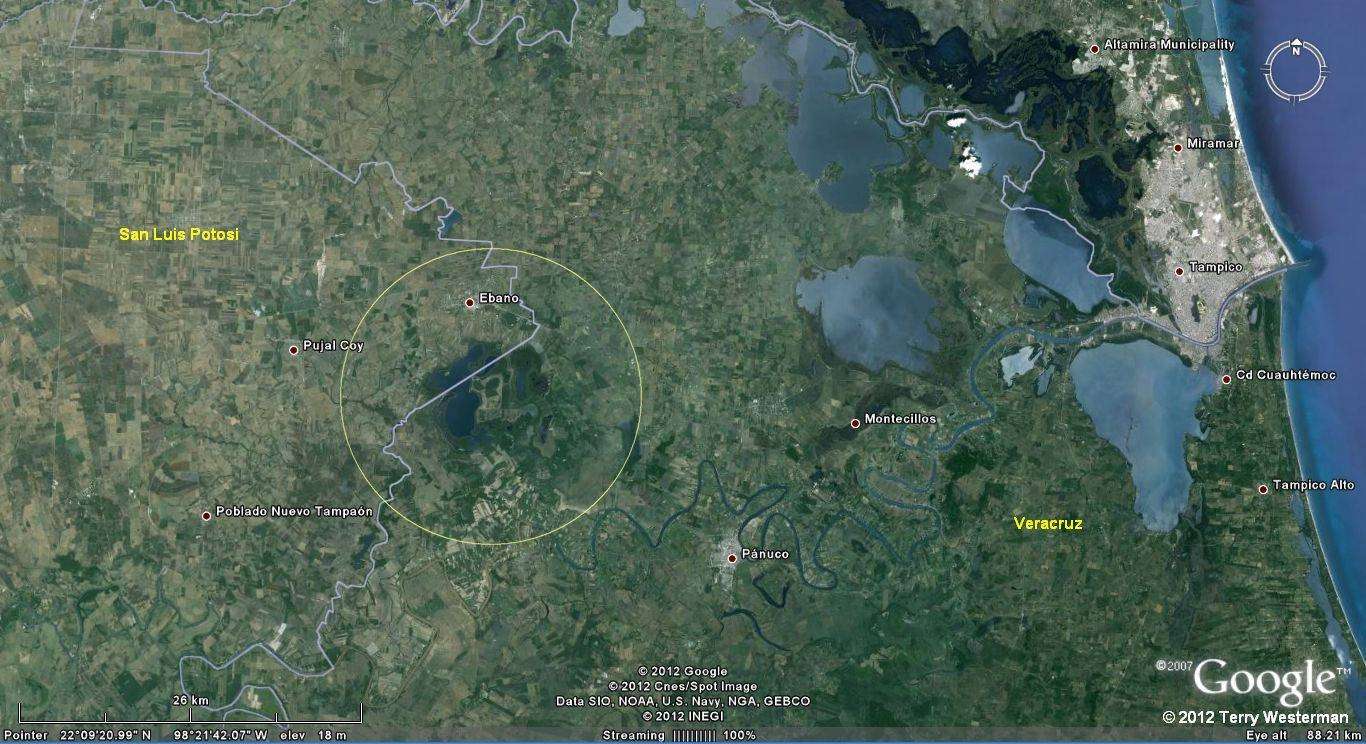
The Ébano Impact is
located about 35 miles inland from the Gulf of Mexico at Tampico, on
the border of San Luis Potosi State, and Veracruz State,
Mexico. It is situated on a wide coastal plane that has been
expanding to the East due to the erosion of the Sierra Madre Oriental
Mountains to the west, and the tidal forces that are slowly drawing
the coast line to the east. The land is primarily sedimentary, rather
than hard rock. It is likely that this impact was an asteroid
of about 1.8 miles in diameter, which came in nearly straight down
but slightly from the south. The shock waves travel outward arranging
the land to follow the concentric circular patterns to at least 1,240
miles radius.
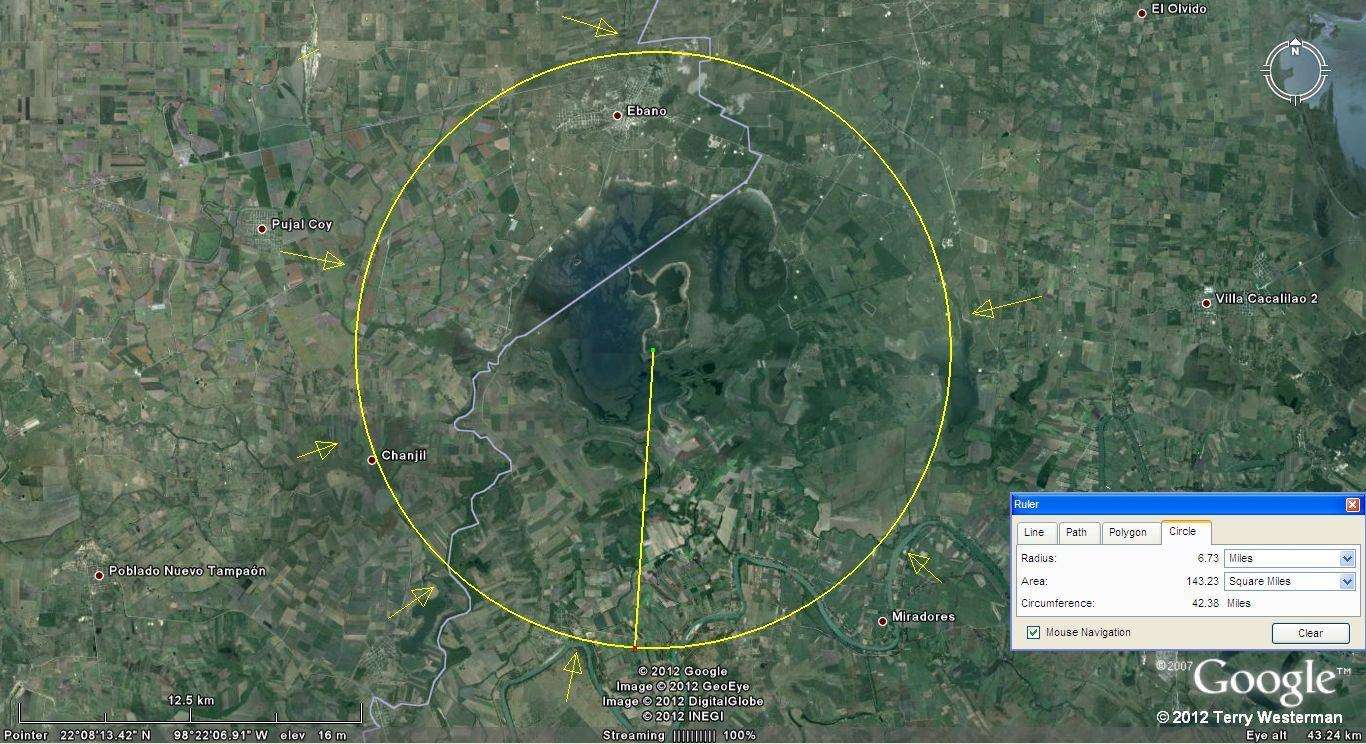
The first shock wave alignments at 7 miles radius, noted
by the yellow arrows pointing out the various geographic features
which form the circle.

This is an image of the Ébano Impact site looking
South from the hill in the town of Ébano, San Luis Potosi,
overlooking the town and the impact site. The area shows a center
island surrounded by a lake of water, surrounded by low irregular
hills.
Click on the image to
see it full sized at 3286 pixels wide.
This is an important site as the impact is
relatively recent, and has not been covered by other impacts.
This shows the effects of a classic deep penetration impact by a
dense asteroid into a soft Earth.
|
The image below is one of the last frames of a
laboratory movie in high speed photography showing a classic high
velocity, deep impact event. It shows a ball bearing shot at
very high velocity into sand. It holds a couple of
surprises.
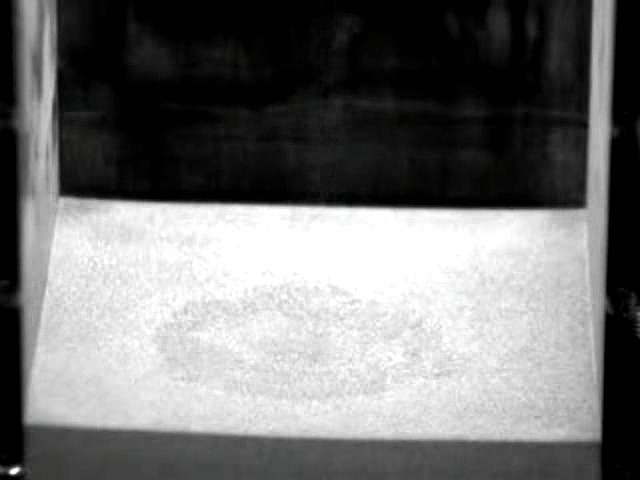
For the movie- Click
here - or on the image.

|
The prospective image below and the laboratory
experiment show remarkable similarities, even down to the outflow
to the lower right.
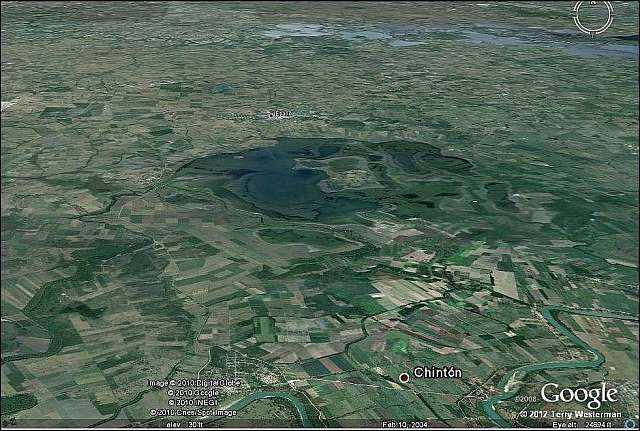
Any problems with viewing the movie,
get
the VLC player here. It is free,
no bugs, no ads and it
works.
|
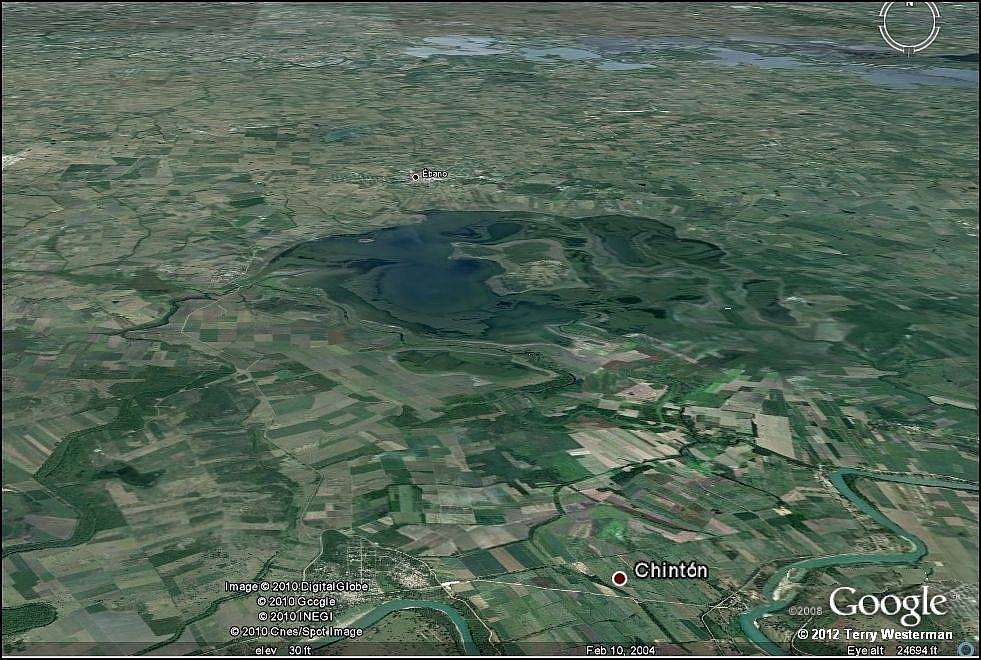
Ebano prospective view from the south.
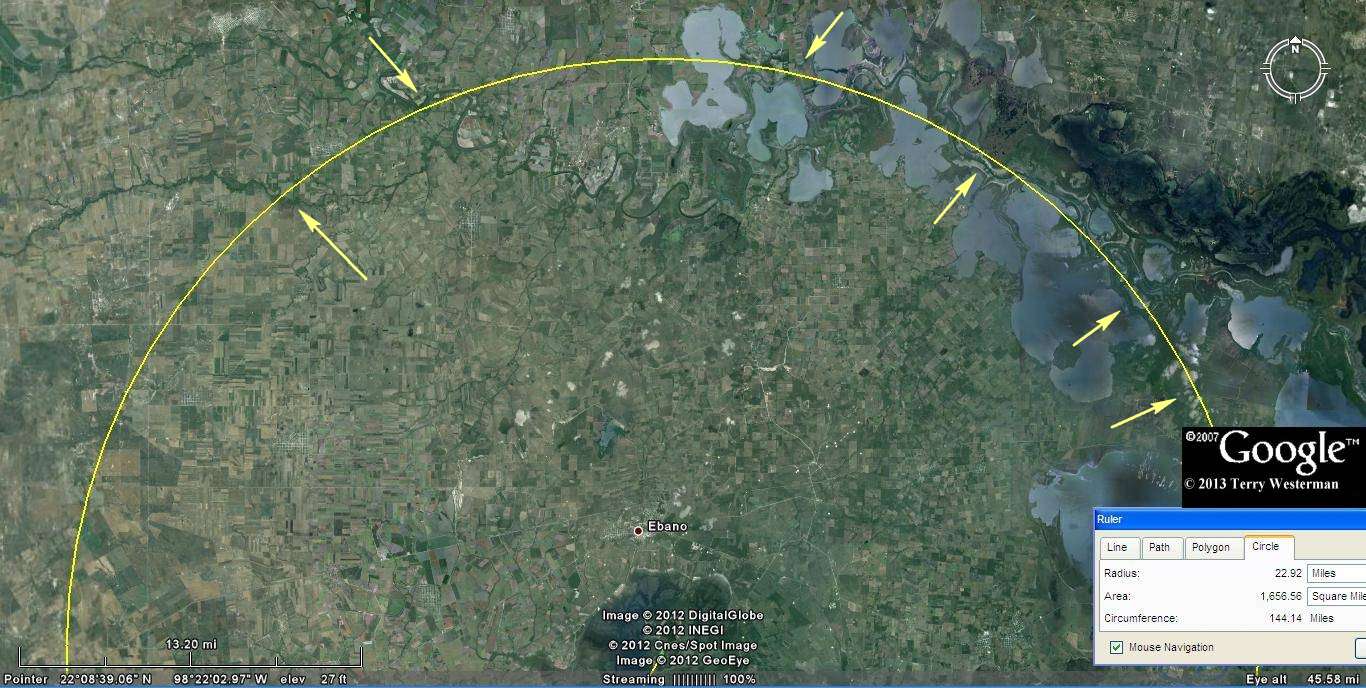
The seismic circle at 22 miles north.
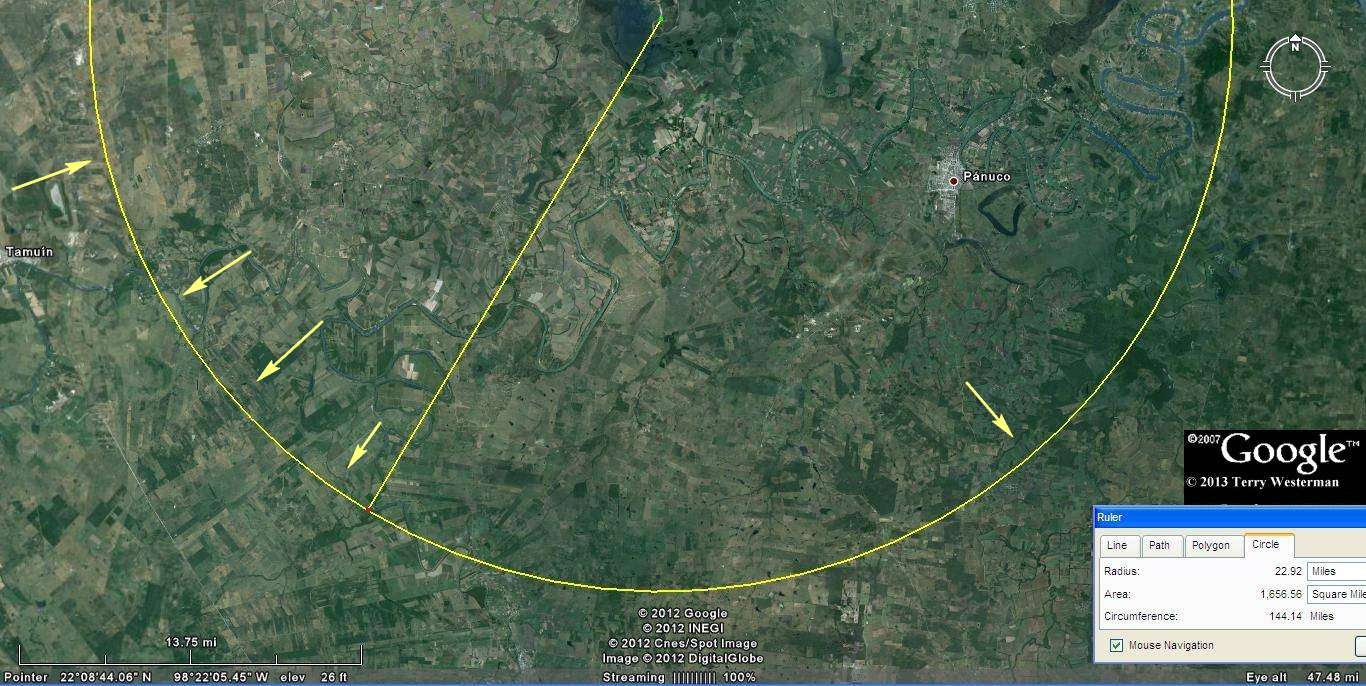
The seismic circle at 22 miles south.
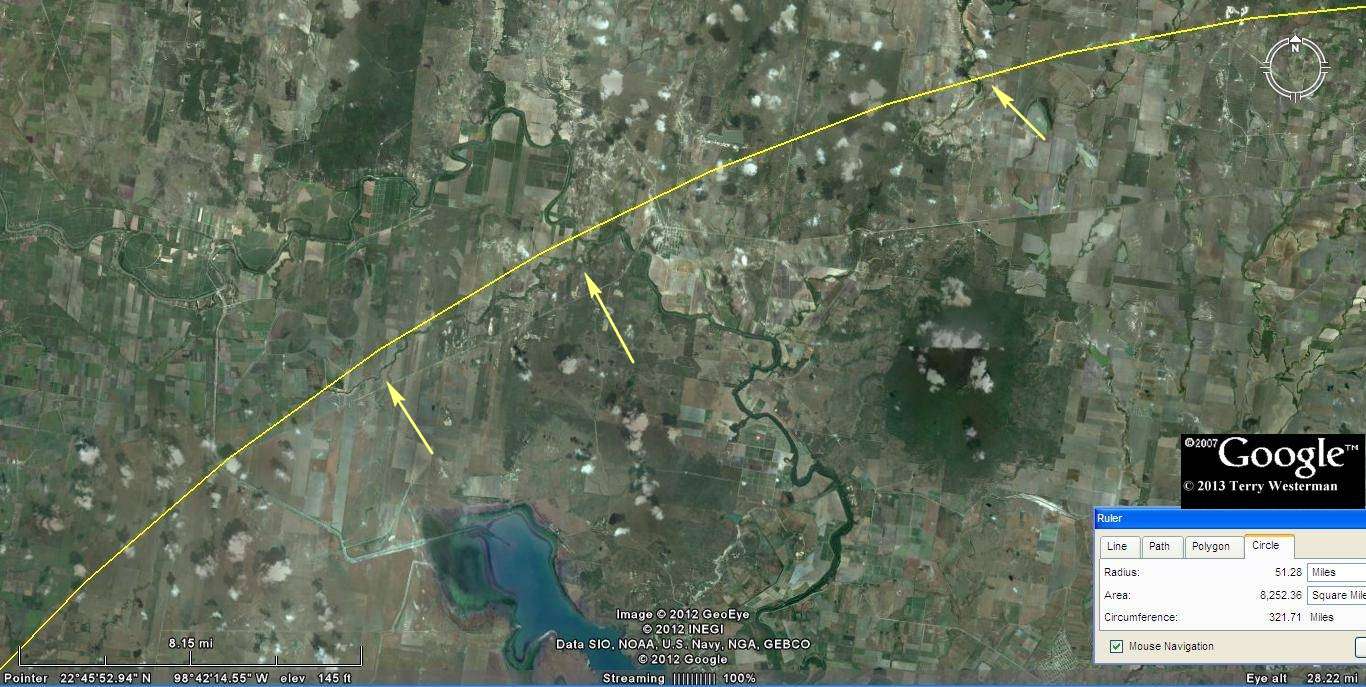
at 50 miles northwest.
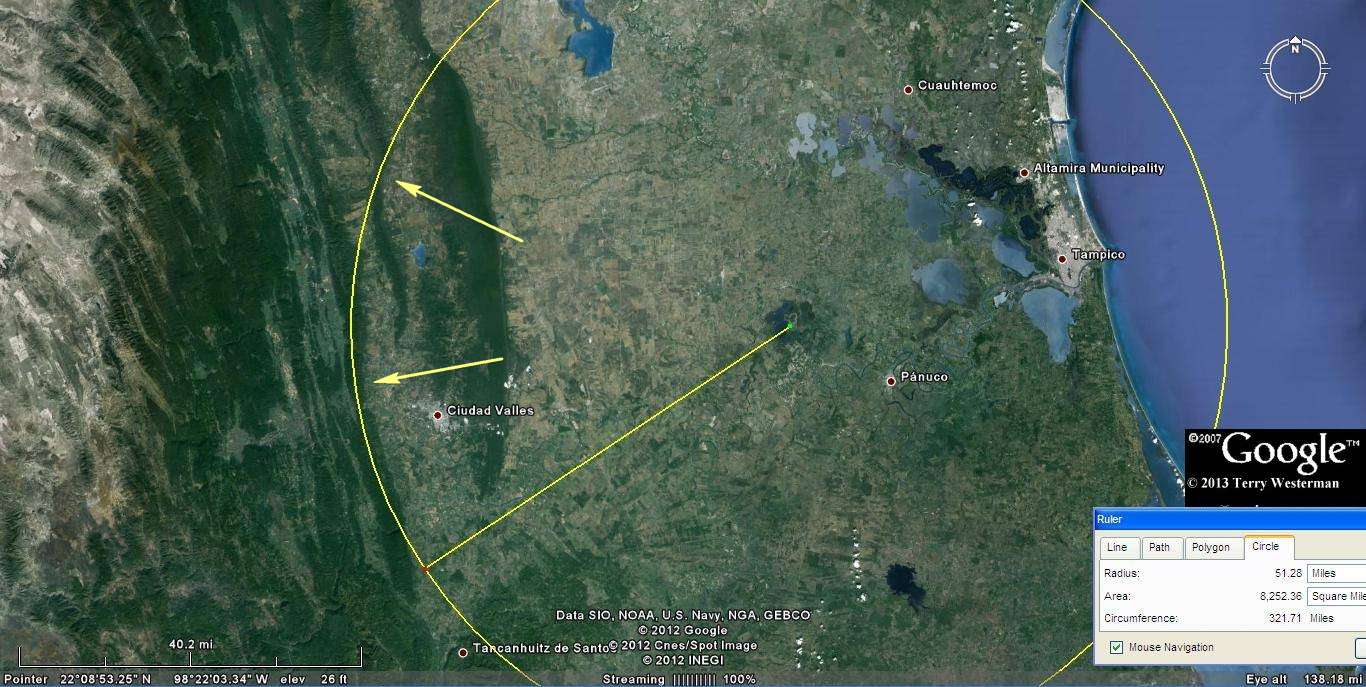
at 50 miles west.
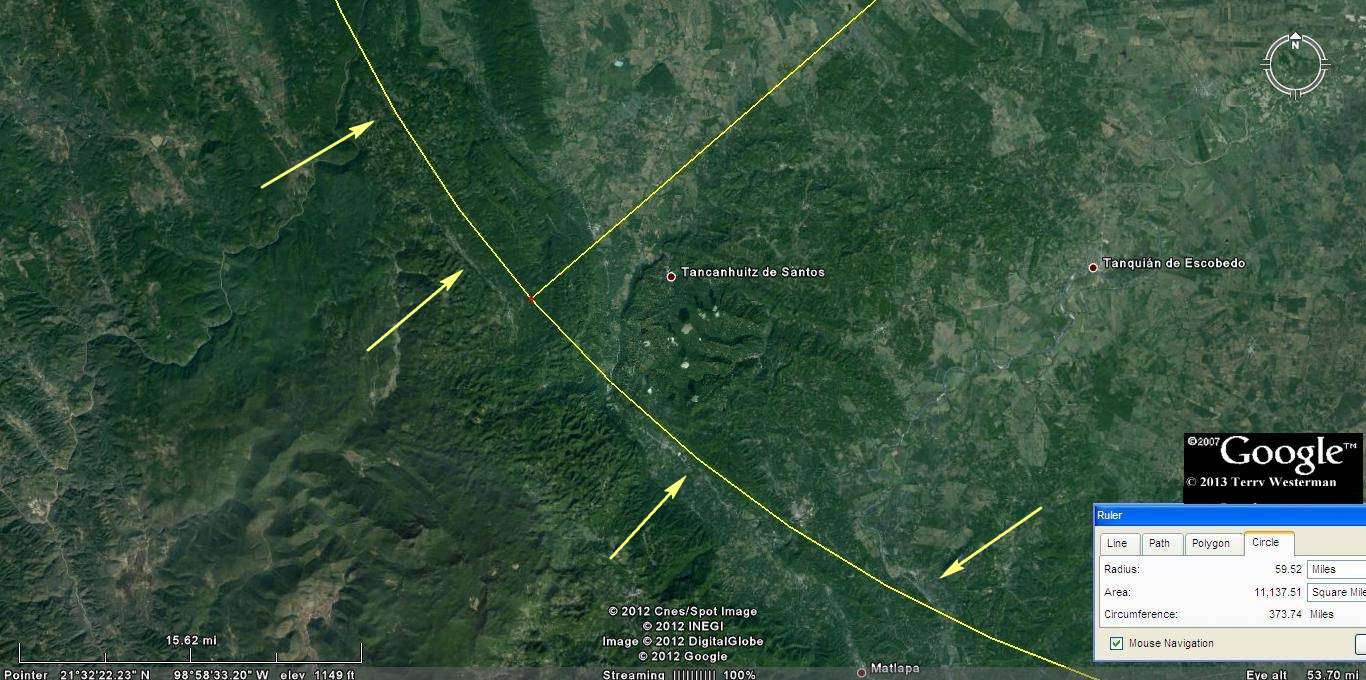
at 60 miles southwest.
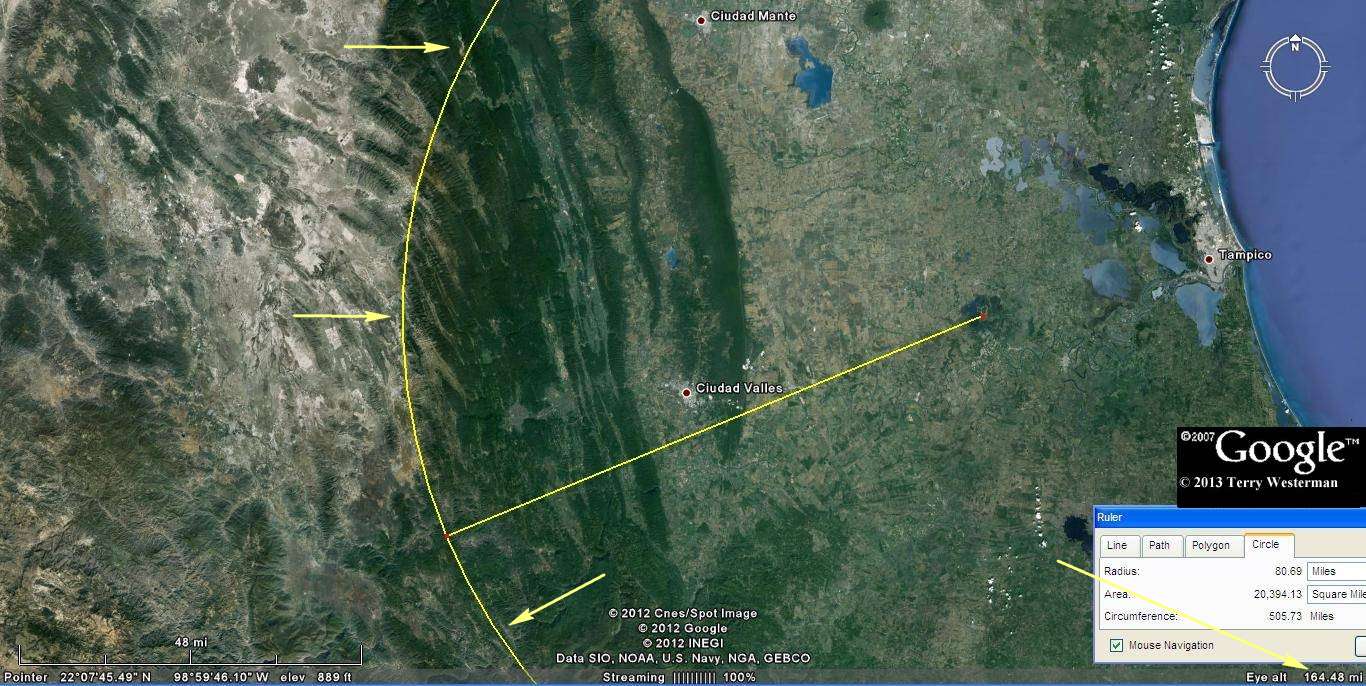
at 80 miles west.
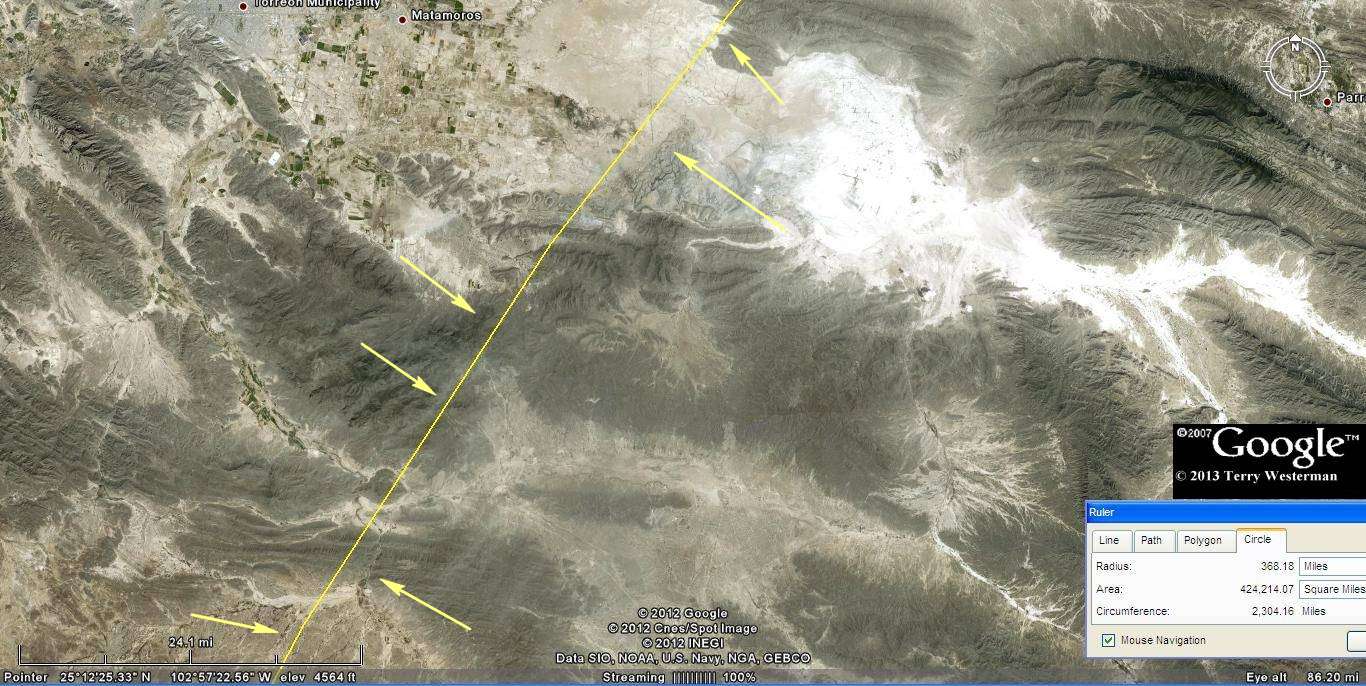
at 370 miles northwest.
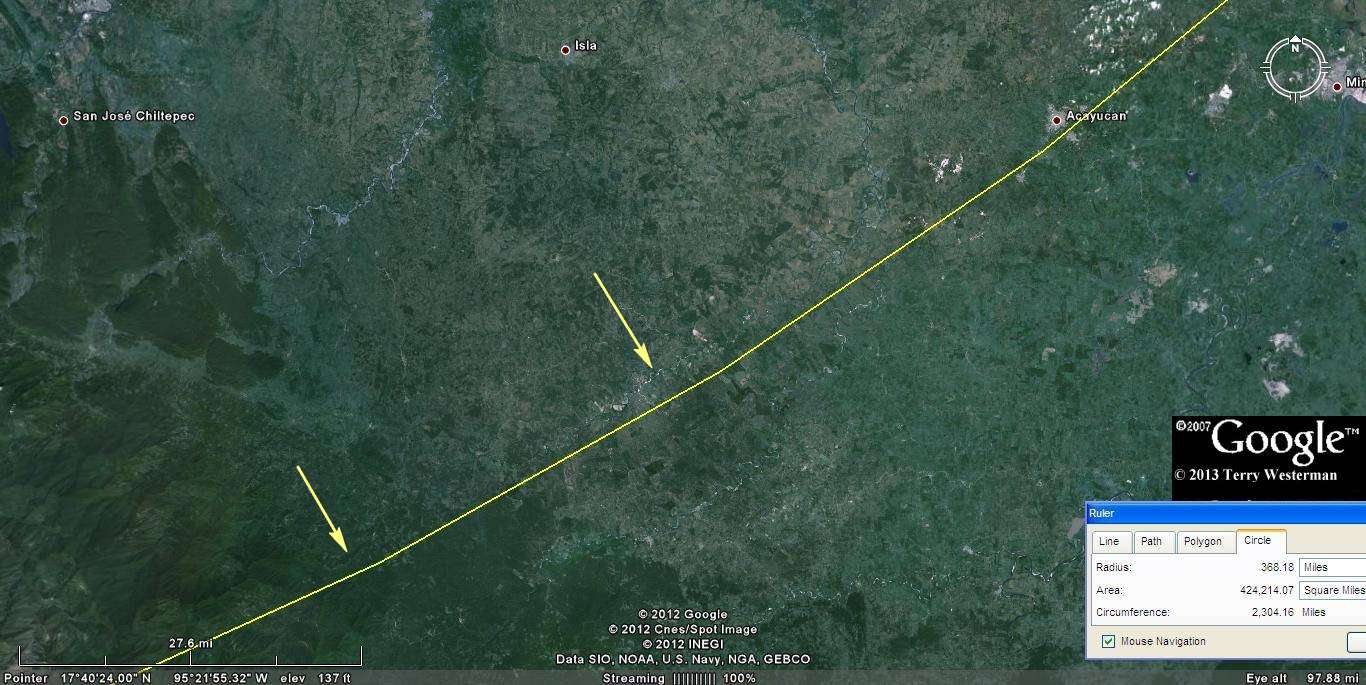
at 370 miles southeast.
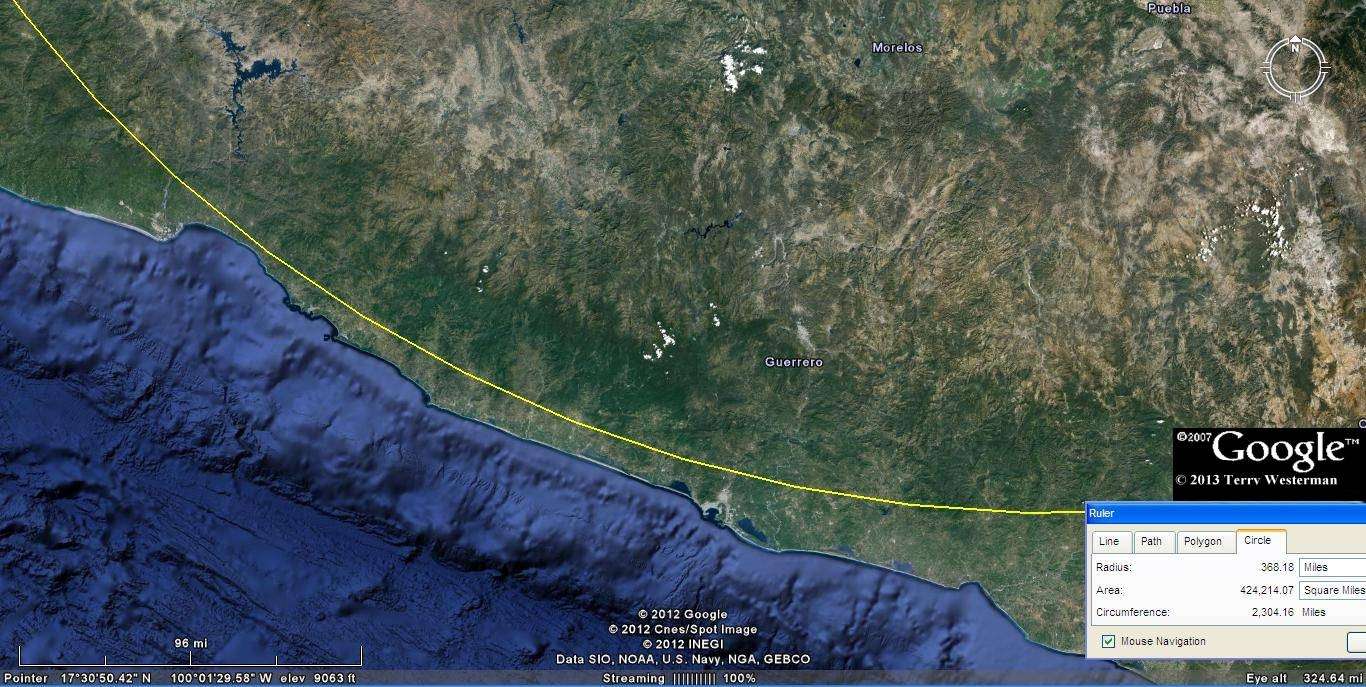
at 370 miles southwest.
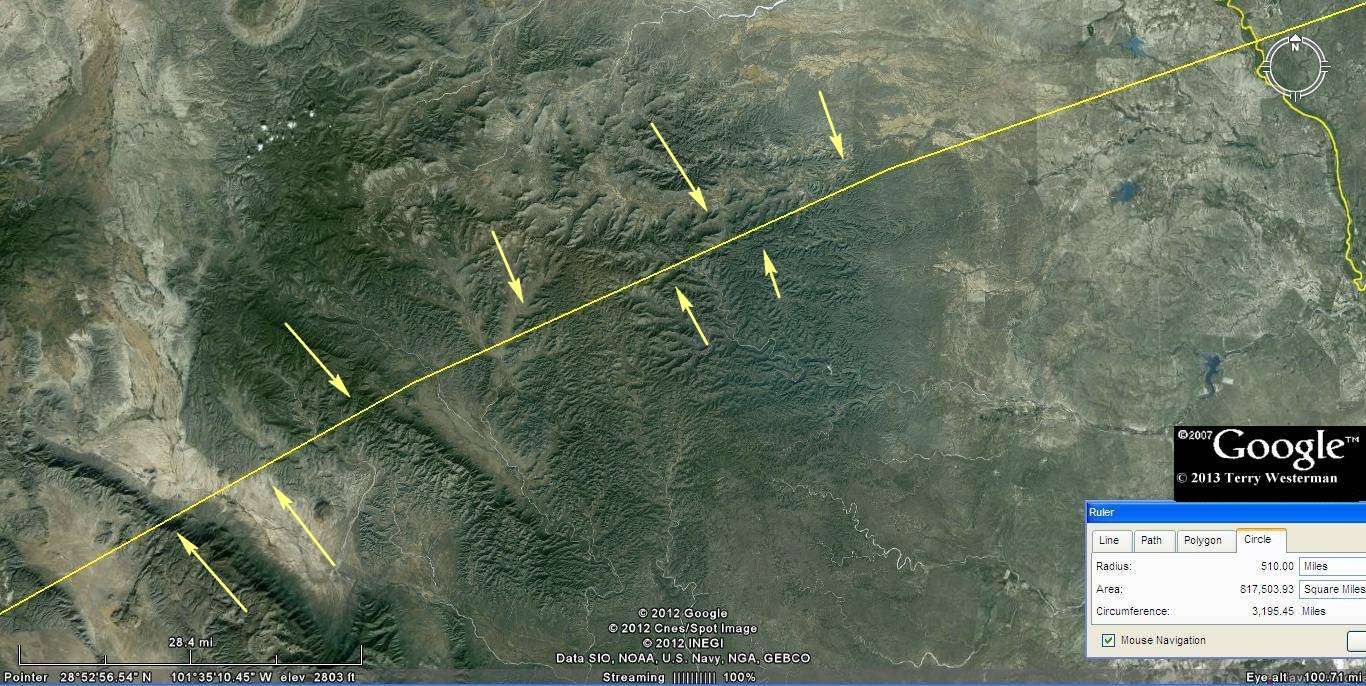
at 510 miles northwest.
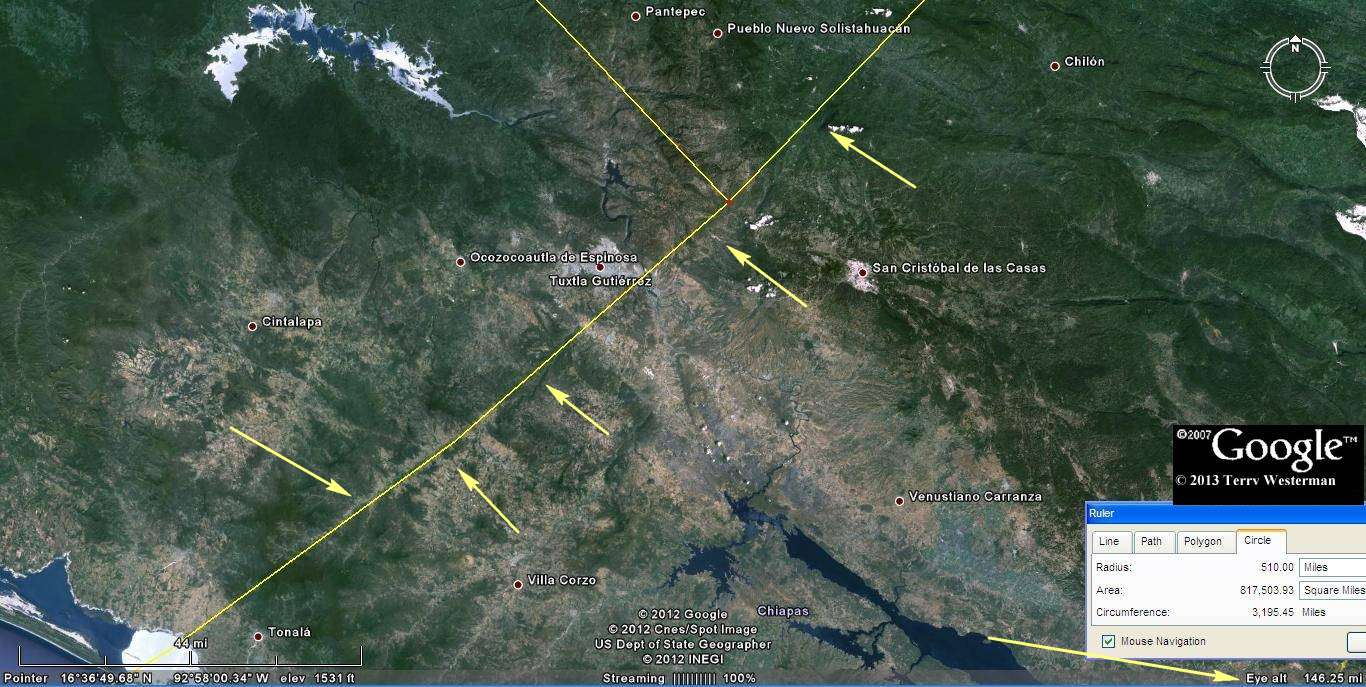
at 510 miles southeast.
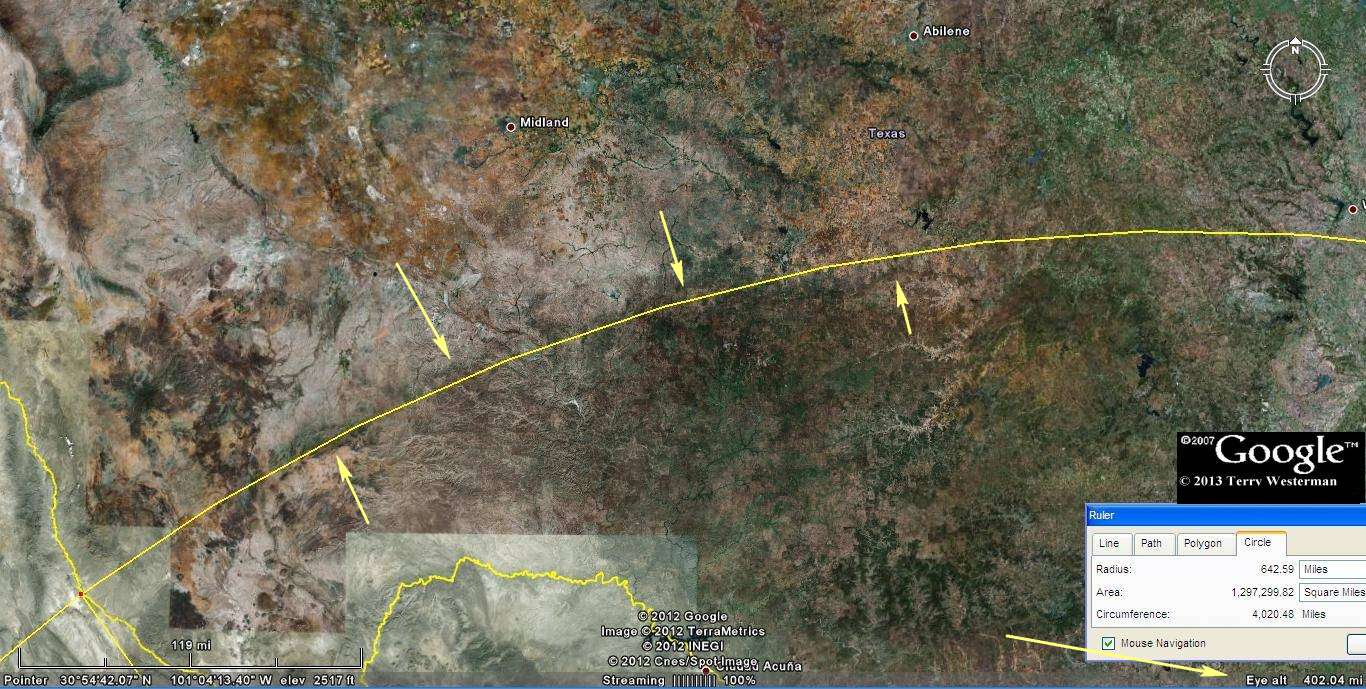
at 640 miles north.
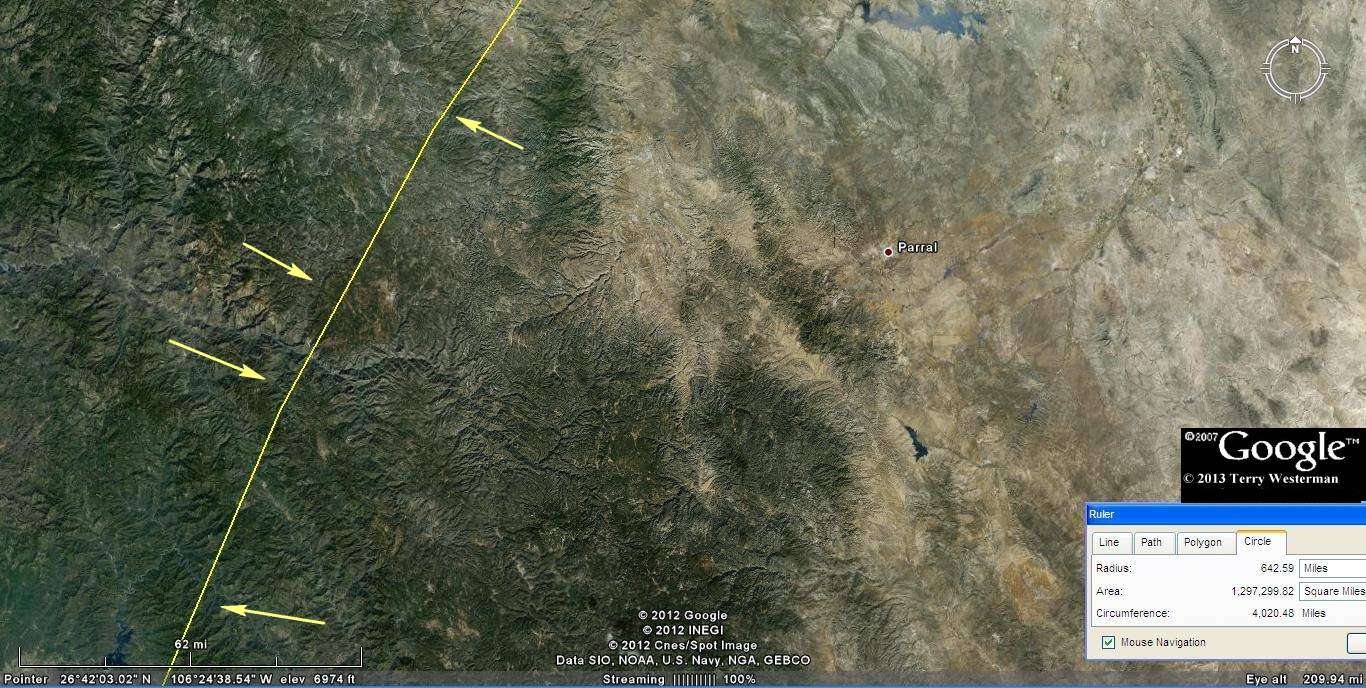
at 640 miles northwest.
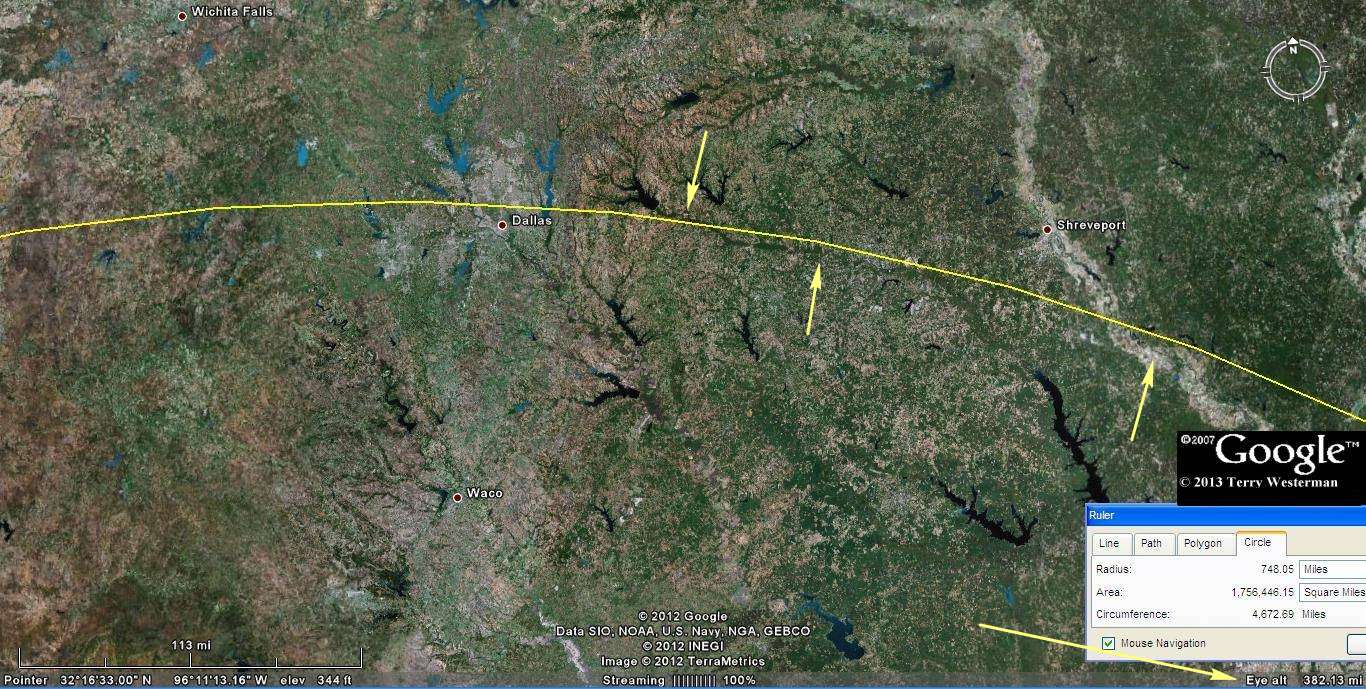
at 750 miles north.
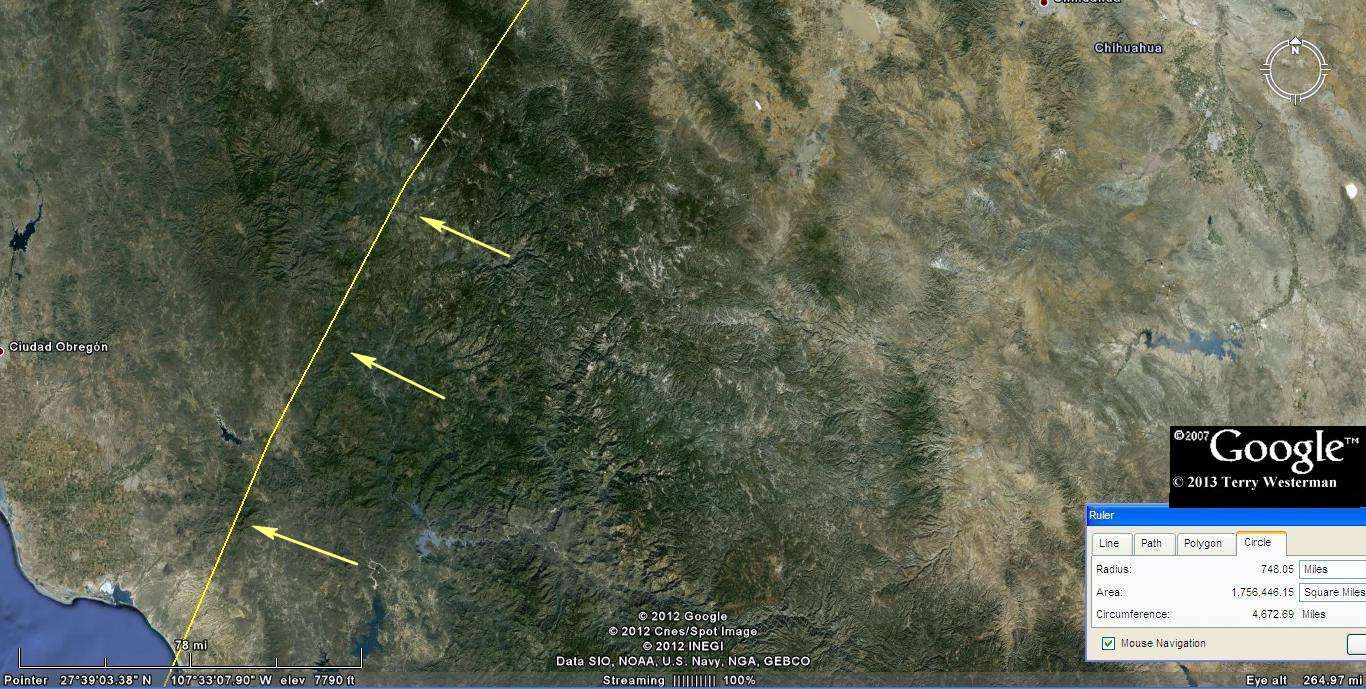
at 750 miles northwest.
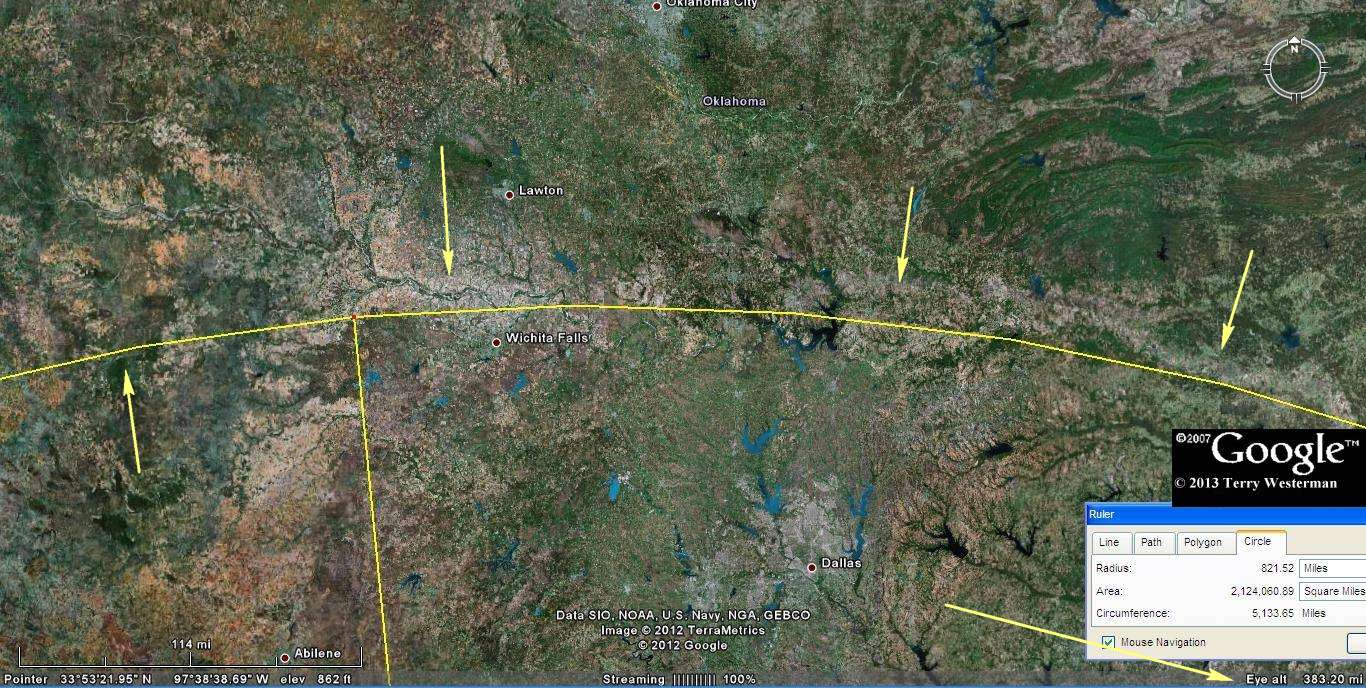
at 820 miles north.

at 1090 miles east.
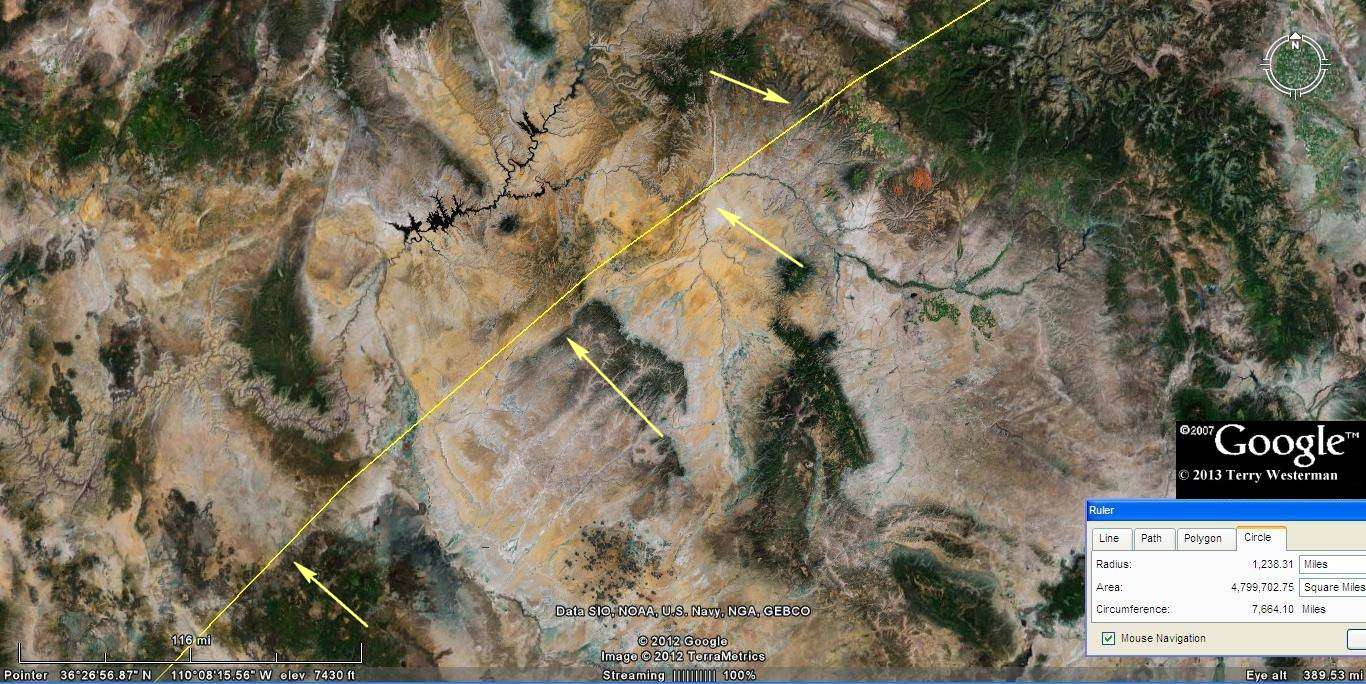
at 1240 miles northwest.
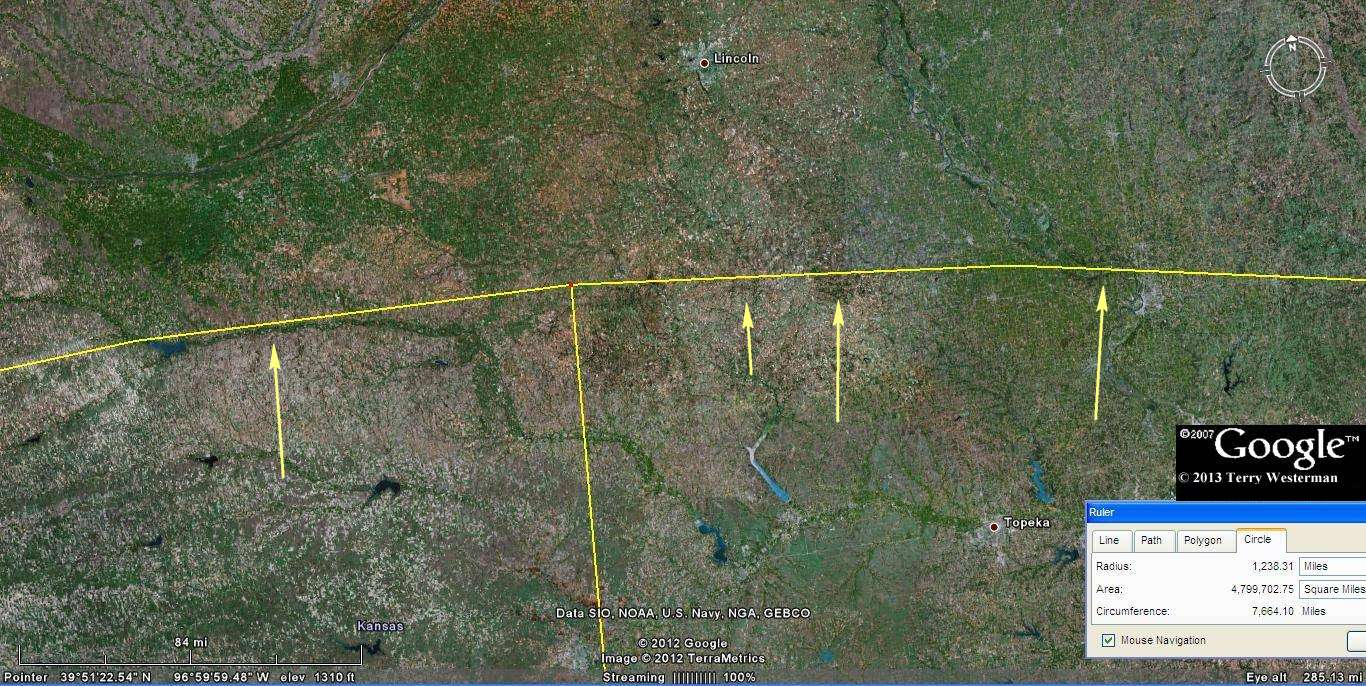
at 1240 miles north.

at 1240 miles northeast.
Index
of Impact Sites
Introduction
Comments, information,
discussion, e-mail me here:
twest@tampicoventures.org
© 2012 Terry Westerman


























